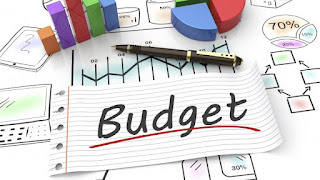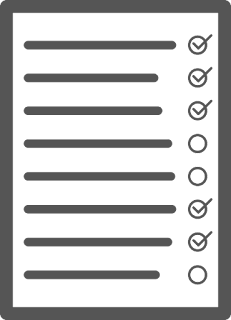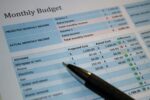
Source : Canada website
Why make a budget ?
A budget is a plan that helps you manage your money. It helps you figure out how much money you get, spend, and save. Making a budget can help you balance your income with your savings and expenses. It guides your spending to help you reach your financial goals.
A budget is especially important if you, if :
don’t know where your money is going
don’t save regularly
have problems paying off your debts
feel overwhelmed by your finances
feel like you’re not in control of your finances
want to make the most of your money
are planning for a major purchase or a life event
Making a budget can help you:
set spending limits
find ways to pay down your debts
reduce costs and save more
live within your means
reduce stress
have more money for things that are important to you
feel in control of your money
What to consider before you start a budget
Take these simple steps before you make your budget.
Think about your financial goals
Identify your short-term and long-term goals. Make saving for those goals part of your budget.
For example, goals may be:
Short-term goals:
paying off your credit card
reducing your weekly expenses
starting to build an emergency fund
Long-term goals:
paying off all of your debts
saving to buy a home, a car, or book a trip
saving to have children, go to school, or to retire
To deal with unexpected situations, create an emergency fund. Your emergency fund should provide you with enough money to cover your living expenses for 3 to 6 months. These amounts can sometimes seem out of reach. That is why you should start by saving a small amount regularly.
Having an emergency fund will help you reduce financial stress and avoid getting trapped in a debt cycle.
Know where your money is going
Tracking your money will help you figure out what comes in and what goes out of your pocket. Every dollar you spend affects your overall budget.
For example, if you spend $2.50 a day on coffee, it will cost you more than $900 a year.
To keep track of where your money is going, take note of what you spend.
Try this exercise for 1 or 2 months:
keep track of everything you buy, from groceries to a daily cup of coffee
keep a copy of the bills you pay during this period, and try dividing your expenses into 2 categories: “needs” and “wants”
Small changes to spending habits can have a major impact on your budget and your ability to save.
Evaluate your needs and wants
Knowing the difference between your needs and your wants is key to making a smart budget.
A “need” is something necessary, required, or essential. For example, a roof over your head, clothing, food, or medication.
A “want” is something that you’d like, but don’t necessarily need. For example, meals at a restaurant, a trip, a gym membership, or designer shoes.
Needs and wants aren’t the same for everyone. One person’s “want” may be another person’s “need”. For example, if you live near a bus route, a car may be a want rather than a need. However, if you don’t have access to public transit and can’t cycle to work, you may need a car.
Your needs and wants may also change over time. For example, a large house may be a need while you’re raising a family. However, a condo or a smaller home may be what you need when your children move out.
Once you’ve figured out your needs and wants, you’re ready to start your budget.
How to make a budget
In order to make a useful budget, you need an effective tool that is easy to use.
Steps to make a budget
Take the following simple steps to make your budget.
Step 1: List your income, savings, and expenses
take your recent pay stubs, bills, and account statements, and enter the amount of income, savings, and expenses into each category of your Budget Planner
When you’re done, review the amounts to make sure you didn’t forget anything. These items should represent your current situation.
As you’re entering data, the tool will give you tips to help you save more and/or spend less. Consider those tips to balance your budget.
When you’re done creating your budget, save it online so you can return to it anywhere, at any time.
Step 2: Review your results
The results section provides you with average guidelines. These guidelines tell you what Canadians usually spend or save for each budget category, for example, food, housing, clothing, insurance, etc.
Look at the different alerts you receive for each category:
Thumbs up: this amount is within the average range
Warning sign: this amount is slightly above the average range
Stop sign: this amount is above the average range
These alerts will help you determine where you should focus your attention or try to reduce costs. Everyone’s situation is different and while the guidelines can’t apply to everybody, they provide a good starting point.
Review your results graphics, they give you a clear visual of your overall budget. You’ll see a graphic that shows you how your budget compares to those of other Canadians in similar situations. It’s valuable to compare your financial habits with people of the same age, income, housing, and family situation.
Step 3: Review your next steps
In the next steps section, the tool gives you personalized suggestions. These suggestions are based on your situation and what you have entered into your budget. They help you figure out your next steps whether you have money left or are overspending.
Read them carefully and follow the links to useful educational tools and content to improve your budget.
Tips to help you stick to your budget
Now that you have a budget, try to stick to it and improve it as you go.
To help you with this task, try the following:
keep all your receipts and bills limit your spending as much as possible to what is in your budget update your budget with any changes, for example, a pay raise, a bill increase, etc.
Compare your budget to what you actually spend at the end of each month.
Evaluate your budget from time to time. If your actual spending often varies from your budget, readjust your figures to make them more realistic.
When comparing your budget to your actual spending, ask yourself the following questions: are there large differences between your actual spending and your budget which categories have the largest differences are differences due to an unusual situation, or is this likely to happen each month can you save enough money to reach your financial goals or pay off your debts.
Continue with this exercise each month. You can set a reminder or book time in your calendar to make sure you review your budget regularly. If you make it a habit, you are more likely to stay on track.
—
Thank you for the Canada website for sharing this information.





